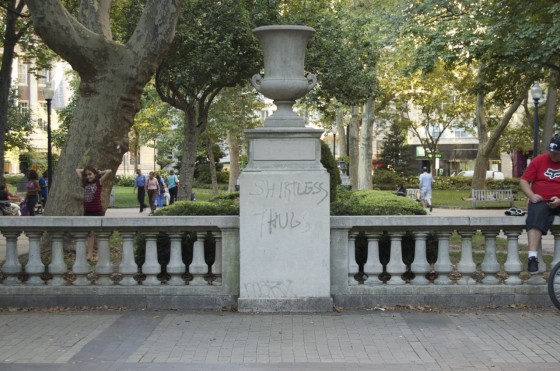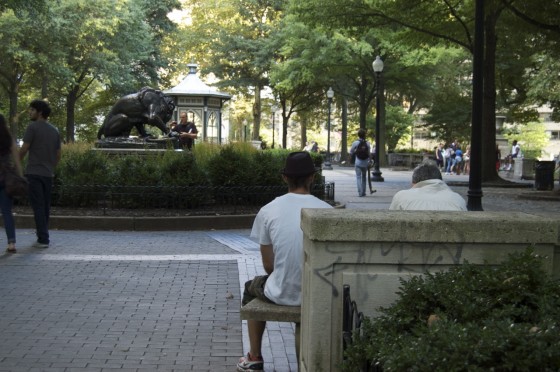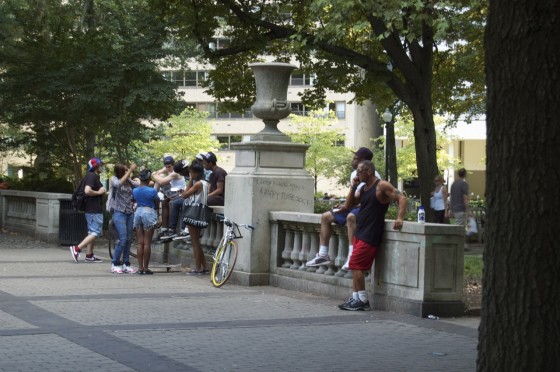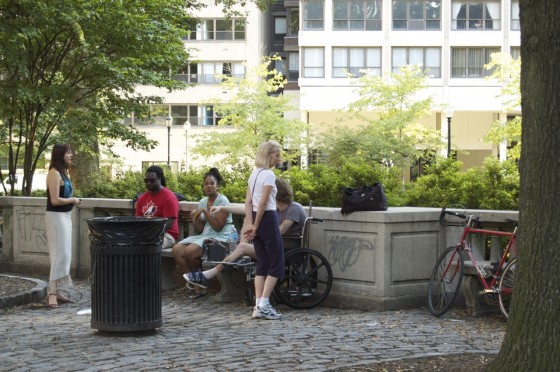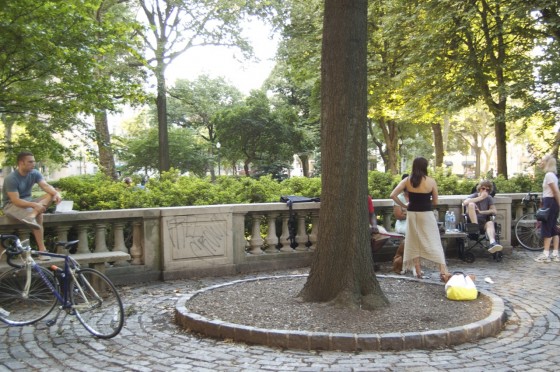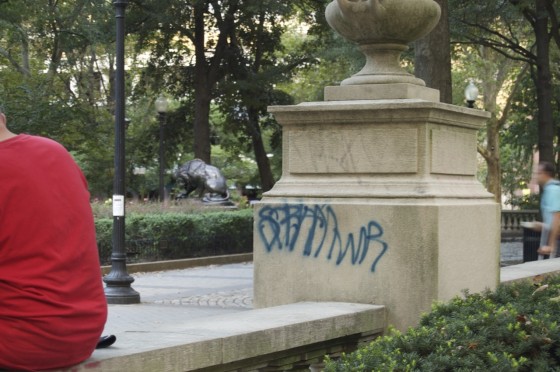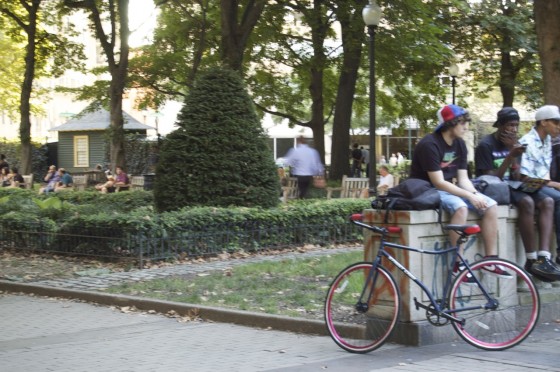Early this summer, Rittenhouse Park received the artistic addition of a “Shirtless Thugs” tag on a central wall in the square. It appears to have gone untouched or at least imperfectly removed by Friends of Rittenhouse Square, the Philadelphia Anti-Graffiti Network, and the city itself; you know, the organizations that one assumes would attend to this issue. Yes, the park is in an urban center. Yes, graffiti is part of our landscape. And yes, the recession and budget issues have surely forced more important concerns to the top of the priority list.
However. Since the addition of “Shirtless Thugs,” the park has gained more tags on surfaces throughout. One doesn’t have to walk more than once around to see numerous defacements on the walls, ledges, and benches. Philadelphia is a city of diversity: mixed races, ethnicities, and economics, but one common meeting place we’ve all enjoyed together for years and years is Rittenhouse Park. The trees, grass, benches and people watching combine to create an unparalleled oasis at the center of life in downtown Philadelphia.
Rittenhouse Park belongs to the residents. Sure, tourists come through after tiring of Old City, rats scurry through the bushes at night, and the cops give the squatters a hard time, but day in and out it’s the still “the place” in this town. It’s where young, old, rich and poor chess players challenge each other, it’s for sunbathing, dog walking, and for playing frisbee and teaching catch. Many eat here, some sleep here, elderly rich folks who bought row homes for $5,000 spend their final days sitting with their home nurses here. Few of us have backyards or the living space we crave, and Rittenhouse is like our shared living room. It’s a collection of art and architecture that we all get to enjoy together.
So, why is it being defaced without appropriate remedy? In 1982, the Broken Windows Theory was offered by two social scientists at the height of urban decay. Controversy ensued mainly about the effect (or not) on major crime, but it was hard to argue against the core of the concept that one act of vandalism will lead to others. If one act of destruction is left unfixed, it makes it more likely that someone else inclined to do so would inflict additional damage. And this seems to be what is happening to Rittenhouse.
The Friends of Rittenhouse Square take responsibility for these types of complaints. They pay the Center City District $15K a year to clean up graffiti in the park. They request donations to help pay for this on their site. We’re no experts in graffiti removal, but doesn’t that seem like a high cost, especially when it seems like CCD hasn’t been on top of the problem this summer?
Does anyone have any suggestions on what to do about this, aside from logging onto Paypal? Is the cause worth it to other Philadelphians, or should we get off the soapbox and accept that this is just how it goes in the city?
— Lauren Summers

